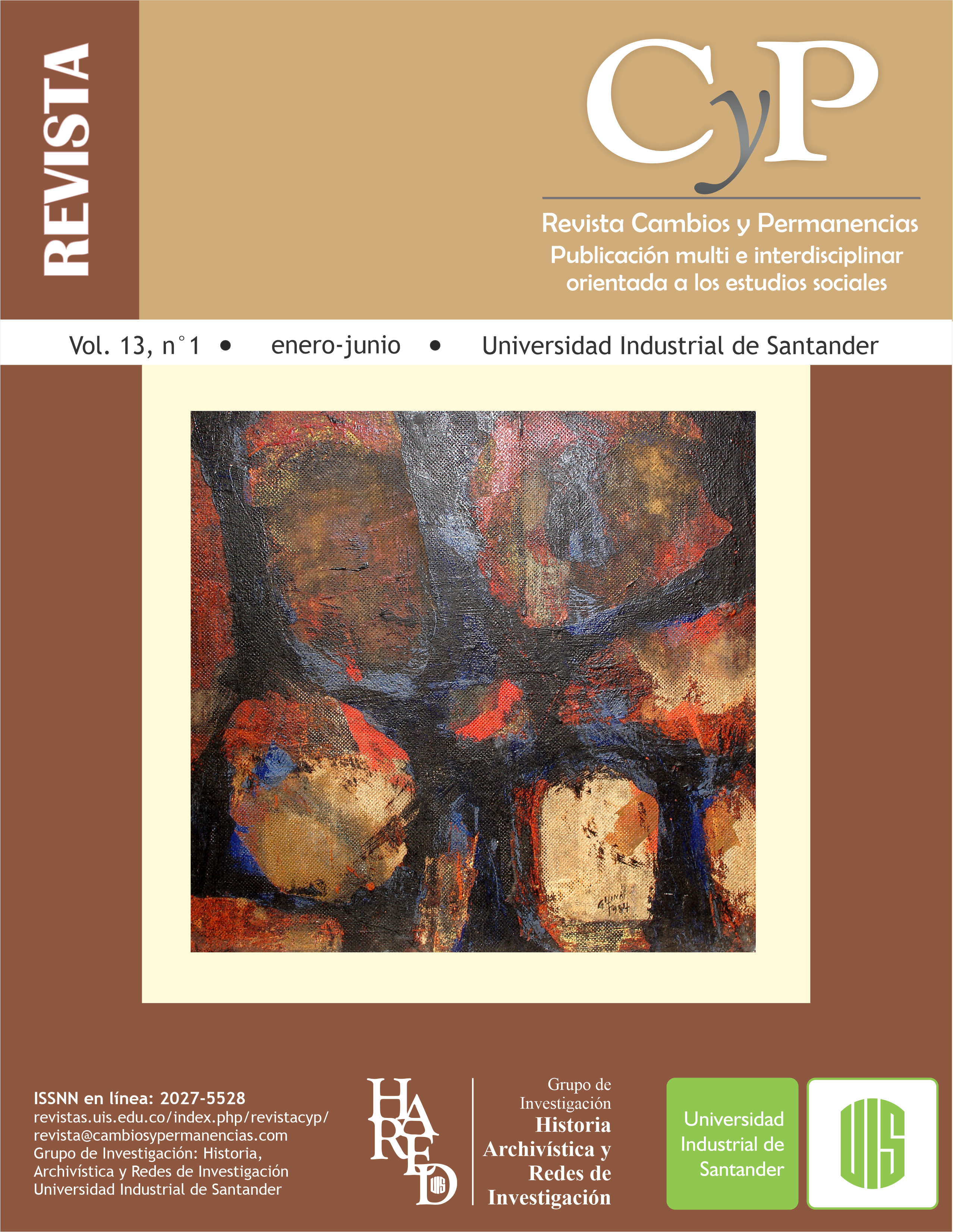Living memory of a past, present. A journey through the knowledge of suachuno heritage
Published 2022-06-05
Keywords
- Intangible heritage,
- knowledge,
- tradition,
- Soacha
How to Cite
Copyright (c) 2022 Revista Cambios y Permanencias

This work is licensed under a Creative Commons Attribution 4.0 International License.
Abstract
Heritage is a field of permanent social tension, it is a concept of complex analysis, especially when it refers to non-physical aspects, that which is known as intangible heritage, that is, those knowledge, practices and living traditions that are valued and should be considered as part of the heritage. In order to learn a little more about the intangible heritage in Soacha, Cundinamarca and thanks to the portfolio of stimuli Suarte reconstruction of Artistic Memory, and the Secretary of Culture and Tourism of the municipality, we proceeded to investigate and research from virtual semi-structured surveys, semi-structured interviews with focal population, observation and reconnaissance tours in the municipality; managing to carry out field diaries with important information to later capture it in a cartography that shows the location of these cultural manifestations, among which stand out: Craft techniques, festive and recreational events, traditional agricultural production practices, culinary culture, religious events, traditional medicine, languages and oral tradition in relation to narration, myths and legends.
Downloads
References
- Davidson, J. R. (1983). La sombra de la vida: la placenta en el mundo andino. Revista Bulletin de l'Institut français d'études andines, 69-81. https://www.persee.fr/doc/bifea_0303-7495_1983_num_12_3_1574
- Decreto 2941 de 2009. por el cual se reglamenta parcialmente la Ley 397 de 1997 modificada por la Ley 1185 de 2008, en lo correspondiente al Patrimonio Cultural de la Nación de naturaleza inmaterial. https://www.funcionpublica.gov.co/eva/gestornormativo/norma_pdf.php?i=37082
- Giddens, A. (1987). El estructuralismo, el postestructuralismo y la producción de la cultura en G. Turner (Ed.), La teoría social hoy (pp. 254-287). Alianza Editorial. http://sgpwe.izt.uam.mx/files/users/uami/ana/ESTRUCTURALISMO_POS_PRODUCCION.pdf
- González Cambeiro, S. y Querol, M. A. (2015). El patrimonio inmaterial. Revista PH 88 Instituto Andaluz del Patrimonio Histórico, 306-307. http://www.iaph.es/revistaph/index.php/revistaph/article/view/3626
- Laclau, E. (2006). Ideología y posmarxismo. Anales de la educación común, 2(4). http://servicios.abc.gov.ar/lainstitucion/revistacomponents/revista/archivos/anales/numero04/ArchivosParaImprimir/3_laclau_st.pdf
- Lyotard, J. F. (1987). La condición postmoderna. Editorial R.E.I.
- Montoya Herrera, J. D. (2014). En Canoas, sobre la virgen y el diablo.
- Olivera, A. (2011). Patrimonio Inmaterial, Recurso Turístico y Espíritu de los Territorios. Cuadernos de Turismo, 663-677. https://www.redalyc.org/articulo.oa?id=39820898036
- Osorio Campillo, H. y Rojas Sánchez, E. (2011). La cartografía como medio investigativo y pedagógico. Revista Dearq, 30-47. https://doi.org/10.18389/dearq9.2011.05
- Restrepo Manrique, C. (2012). Historia de la Chicha la Cerveza Andina. https://www.historiacocina.com/es/historia-de-la-chicha
- Ríos Ramírez, M. y Alemán Díaz, J. S. (2019). Las bebidas tradicionales del altiplano cundiboyacense y su vinculación con el turismo. Universidad Externado de Colombia.
- Souza Santos, B. (2011). Epistemologías del Sur. Revista Internacional de Filosofía Iberoamericana y Teoría Social, 17-39. http://www.boaventuradesousasantos.pt/media/EpistemologiasDelSur_Utopia%20y%20Praxis%20Latinoamericana_2011.pdf
- Unesco (2004). La Unesco y el patrimonio mundial. Unesco Etxea. https://www.unescoetxea.org/dokumentuak/UNESCOPatrimonio.pdf
- Unesco (2016). Patrimonio Cultural Inmaterial. https://es.unesco.org/themes/patrimonio-cultural-inmaterial
- Van Der Hammen, M. C. (2006). Patrimonio natural y cultural: visiones y vivencias desde la cotidianidad en D. A. Párias y T. D. Palaci (Eds.), Construcción de lugares - patrimonio. El Centro Histórico y el humedal de Córdoba en Bogotá. Universidad Externado de Colombia.
